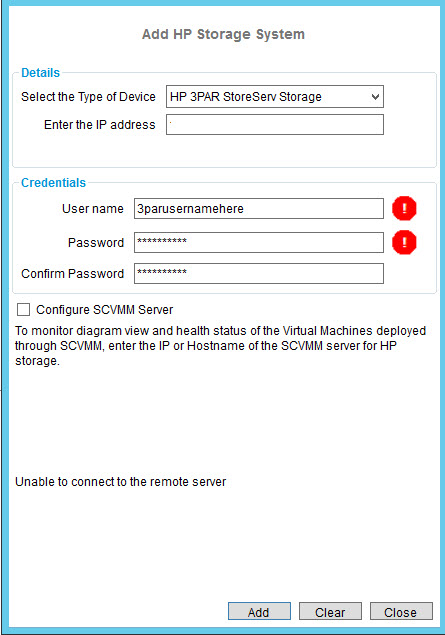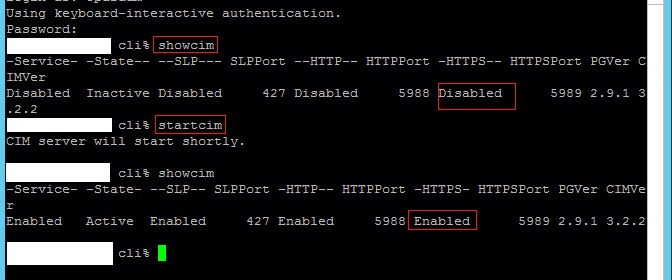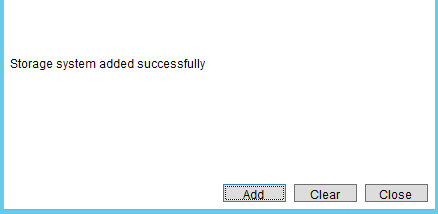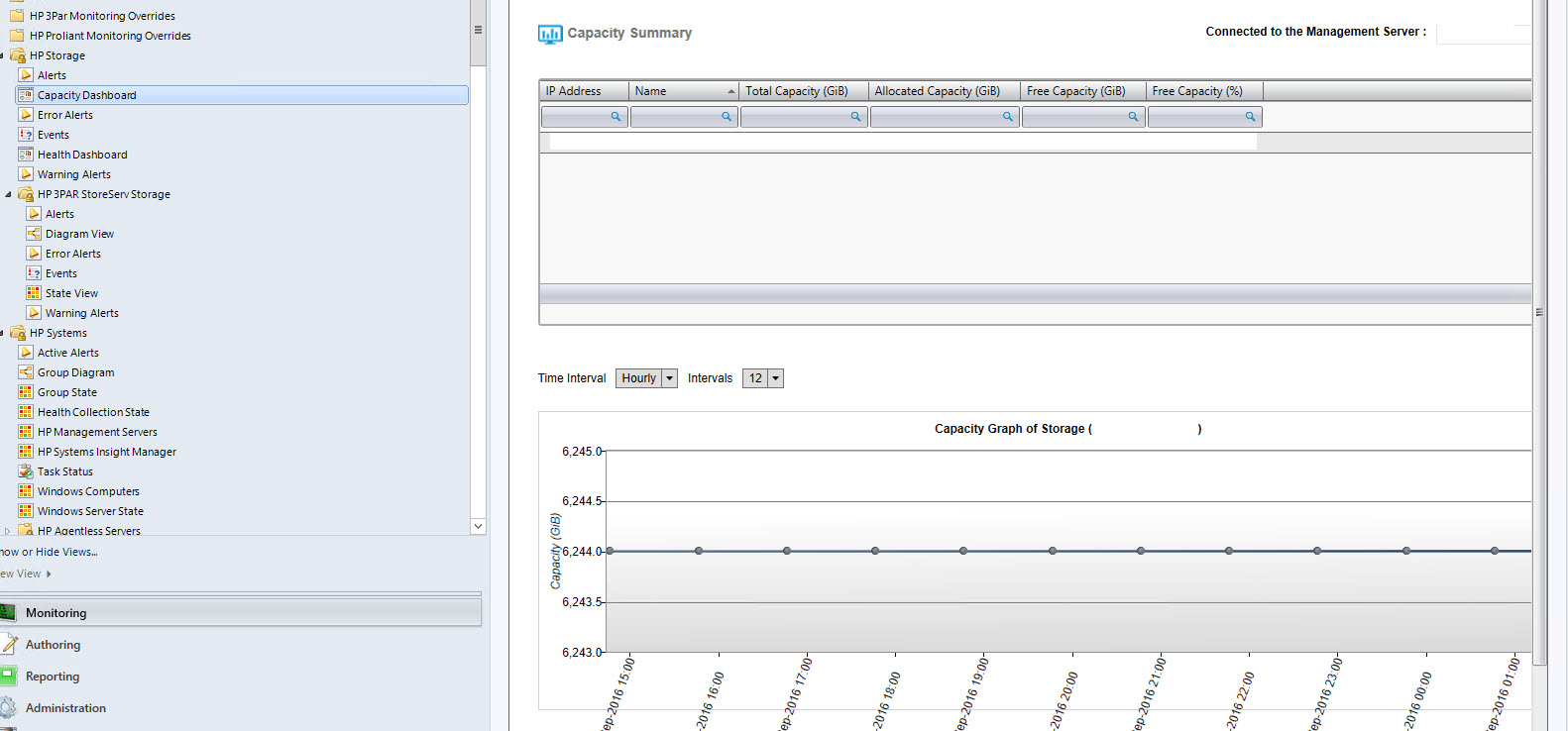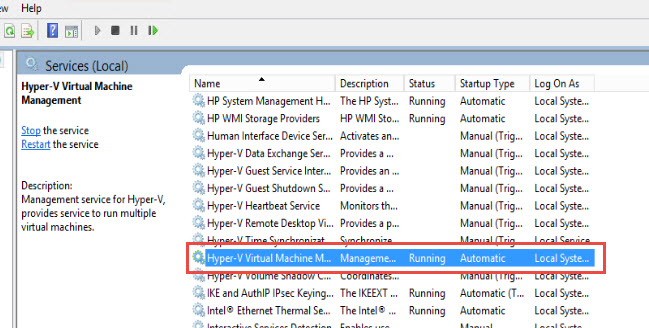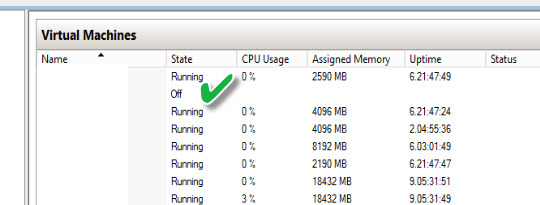HP 3PAR with SCOM “Unable to connect to the remote server”
I was recently configuring the HP 3PAR monitoring for System Center Operations Manager 2012R2 for a customer. After installing the HP SCOM Storage Monitoring Application and adding my local management server, I proceeded to add the HP 3PAR Storage System via the HP Storage Management Pack User Configuration Tool and received the error “Unable to connect to the remote server” whenever I attempted to connect.
I confirmed my username/password was correct – even setup a new account, all with the same result. It turns out that the CIM service was not running on the 3PAR, which is a requirement for the application/management pack to function. I connected to the storage system via SSH, typed “showcim” and confirmed that it was not functional. Running the command “startcim” started the CIM service and after a few seconds, returned to the HP Storage System dialog and re-connect with success!
Finally, after enabling discovery in SCOM for the Management Server and waiting a couple of minutes the storage system appeared in SCOM and reported as it should.
Hyper-V 2012R2/VMM 2012R2 VM “Missing” status/Stuck “Starting”
I recently had an issue with a customer with a missing VM after it was shutdown for maintenance. As soon as it was started in Virtual Machine Manager, it immediately went to a Failed state and was missing from all Hyper-V hosts and stuck in a Failed state in Failover Cluster Manager.
The unusual thing was VMM and Failover Cluster manager thought they were on different hosts(follow steps below for the host that Cluster Manager says it should be on). The issue was due to the missing symbolic link to the VM on the Host it was missing from.
The fix was to re-create the symbolic link on the Host Failover Cluster Manager thinks it’s missing from. First, find the GUID for your VM from the source location for the specific VM config:
Then browse to C:\ProgramData\Microsoft\Windows\Hyper-V\Virtual Machines on the host in question. Run CMD prompt as Administrator from the folder and create the link with the following command: Mklink FA060046-2C40-4D8E-A6EA-2A4587A84B3B.xml “C:\ClusterStorage\Volume4\YOURVMNAMEHERE\Virtual Machines\FA060046-2C40-4D8E-A6EA-2A4587A84B3B.xml”
Then grant permissions:
icacls “%SYSTEMDRIVE%\ProgramData\Microsoft\Windows\Hyper-V\Virtual Machines\FA060046-2C40-4D8E-A6EA-2A4587A84B3B.xml” /grant “NT VIRTUAL MACHINE\FA060046-2C40-4D8E-A6EA-2A4587A84B3B”:F /l
Finally restart the Hyper-V Virtual Machine Service and all should be back online!

